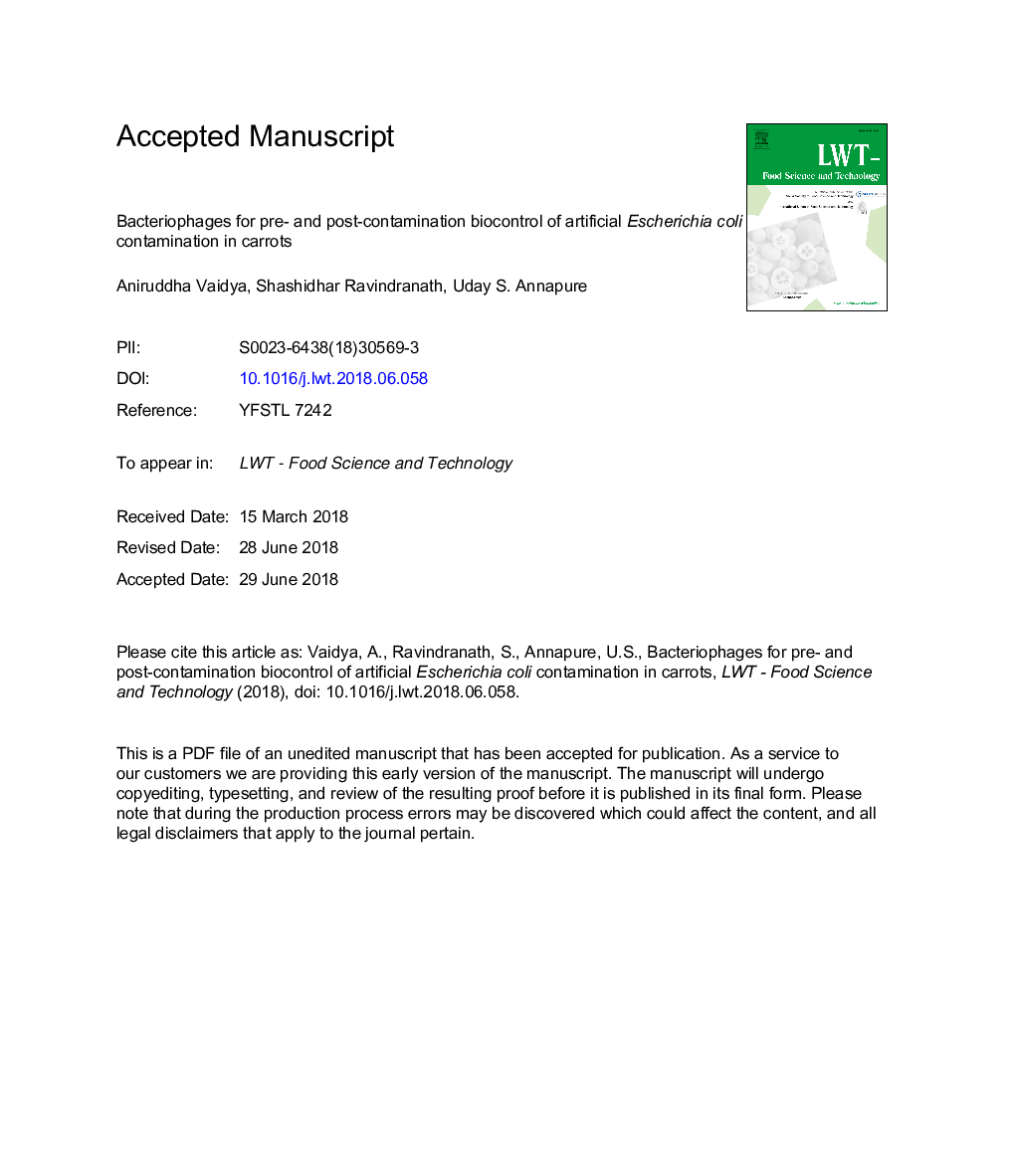| Article ID | Journal | Published Year | Pages | File Type |
|---|---|---|---|---|
| 8890101 | LWT - Food Science and Technology | 2018 | 21 Pages |
Abstract
The phages Escos1 and Escog1 were isolated from sewage and garden soil samples respectively and characterized for morphology, genome size and sensitivity to pH, temperature and chloroform. Carrot slices of uniform surface area were sterilized by exposure to a radiation dose of 6â¯kGy. One set of these sterile slices was spiked with Escherichia coli (E. coli) DH5-α (8-log10 Colony Forming Units (CFUs) mlâ1). The spiked slices were dried and treated with a high titre (1010 Plaque Forming Units (PFUs) mlâ1) cocktail of Escos1 and Escog1. The slices were then incubated at room temperature (R.T.) and checked for reduction in bacterial CFUs over 6 days, in comparison with a control. Another set of sterile slices was pre-treated with the cocktail and dried. This was followed by artificial E. coli contamination of pre-treated slices on consecutive days. The surviving CFUs were determined to study the prophylactic potential of the phage cocktail. An average of 6.23-log10 reduction in E. coli CFUs per carrot slice was obtained in the post-contamination treatments studies. Pre-contamination treatment reduced the bacterial load by an average of 6.22-log10â¯CFUs per slice. More than 99.99% of the phages used for the treatment could be removed with gentle rinsing.
Related Topics
Life Sciences
Agricultural and Biological Sciences
Food Science
Authors
Aniruddha Vaidya, Shashidhar Ravindranath, Uday S. Annapure,
